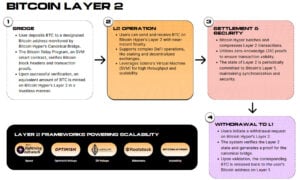Alvin Lang
Sep 29, 2025 16:34
Explore how efficient global memory access in CUDA can unlock GPU performance. Learn about coalesced memory patterns, profiling techniques, and best practices for optimizing CUDA kernels.
Efficient management of global memory is crucial for optimizing GPU performance in CUDA applications, as discussed by Rajeshwari Devaramani on the NVIDIA Developer Blog. This comprehensive guide delves into the intricacies of global memory access, emphasizing the importance of coalesced memory patterns and efficient memory transactions.
Understanding Global Memory
Global memory, or device memory, is the primary storage space on CUDA devices, residing in device DRAM. It is accessible by both the host and all threads within a kernel grid. Memory can be allocated statically using the __device__ specifier or dynamically via CUDA runtime APIs like cudaMalloc() and cudaMallocManaged(). Efficient data transfer and allocation are crucial for maintaining high performance.
Optimizing Memory Access Patterns
The efficiency of global memory access largely depends on the pattern of memory transactions. Coalesced memory access occurs when consecutive threads access consecutive memory locations, allowing for optimal use of memory bandwidth. For instance, a warp accessing contiguous 4-byte elements can be satisfied with minimal memory transactions, maximizing throughput.
Conversely, uncoalesced access, where threads access memory with large strides, results in inefficient memory transactions. Each thread fetches more data than necessary, leading to wasted bandwidth and reduced performance.
Profiling with NVIDIA Nsight Compute
Profiling tools like NVIDIA Nsight Compute (NCU) are invaluable for analyzing memory access patterns. NCU provides metrics that highlight inefficiencies in memory transactions, helping developers identify areas for optimization. For example, metrics such as l1tex__t_sectors_pipe_lsu_mem_global_op_ld.sum and l1tex__t_requests_pipe_lsu_mem_global_op_ld.sum offer insights into the coalescing efficiency of memory accesses.
Strided Access and Its Impact
Strided memory access, where threads access memory locations that are not contiguous, can severely degrade performance. The impact of stride on bandwidth can be visualized through profiling, revealing how larger strides reduce effective memory bandwidth.
For multidimensional arrays, ensuring that consecutive threads access consecutive elements can mitigate the negative effects of stride. In 2D arrays, using row-major order can help achieve coalesced access patterns, optimizing memory transactions.
Conclusion
To maximize GPU performance, developers should prioritize coalesced memory accesses and minimize strided access patterns. Regular profiling with tools like Nsight Compute is essential to ensure efficient memory utilization. By focusing on these practices, developers can leverage the full potential of CUDA-enabled GPUs.
For further insights, visit the original article on the NVIDIA Developer Blog.
Image source: Shutterstock
Source: https://blockchain.news/news/enhancing-gpu-efficiency-global-memory-access-cuda



